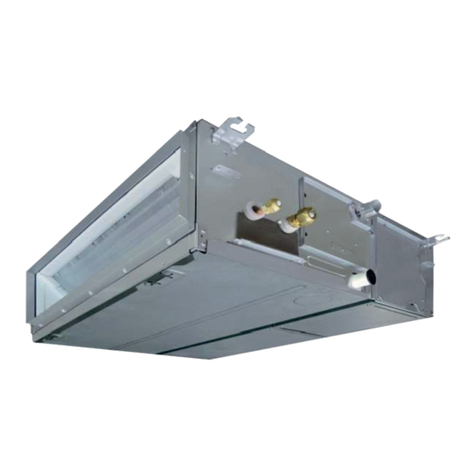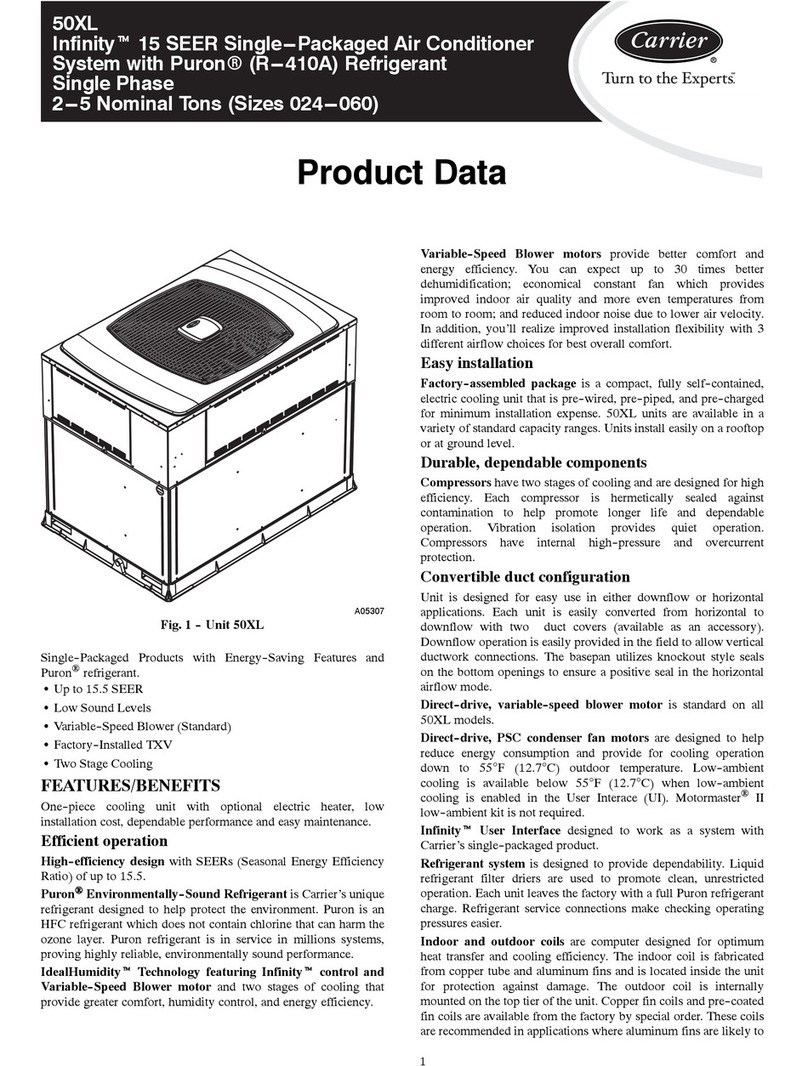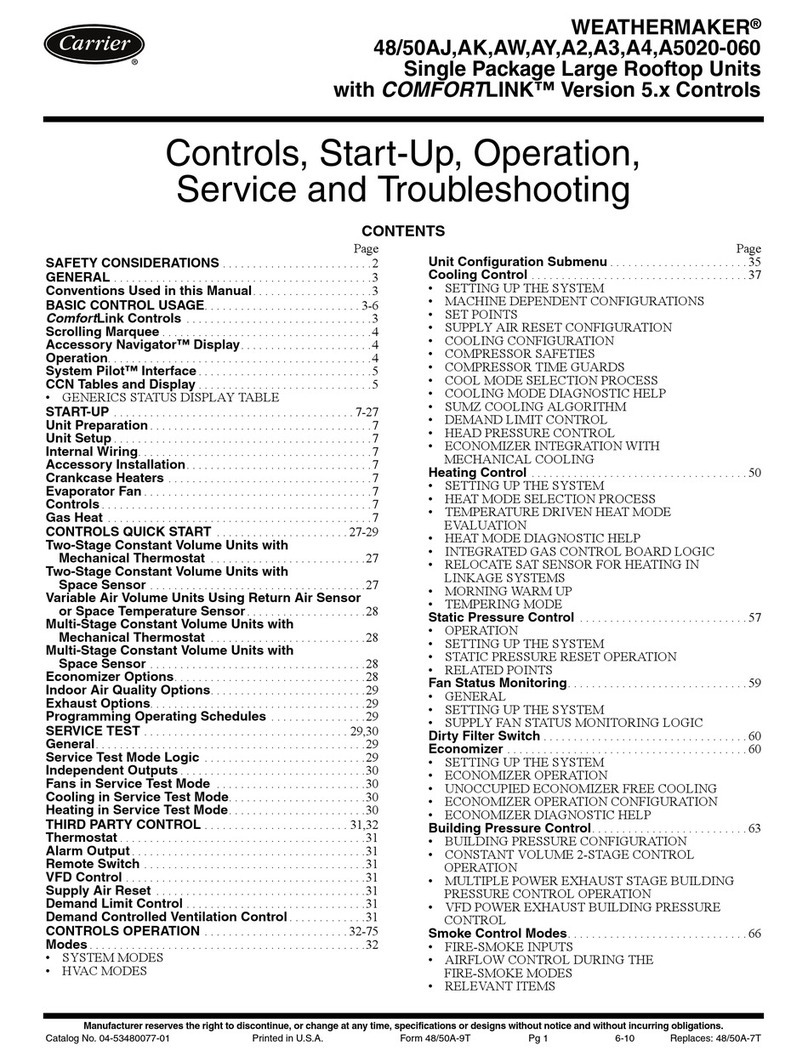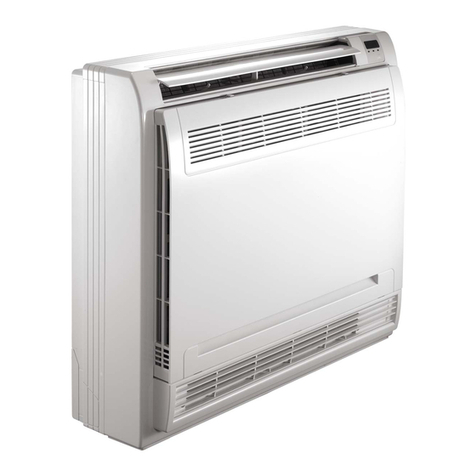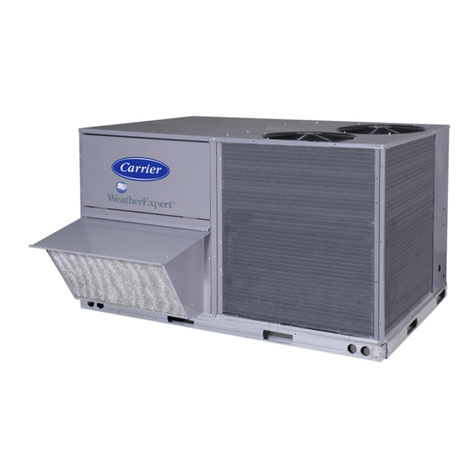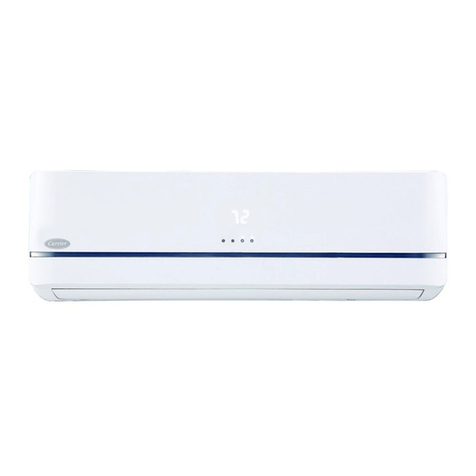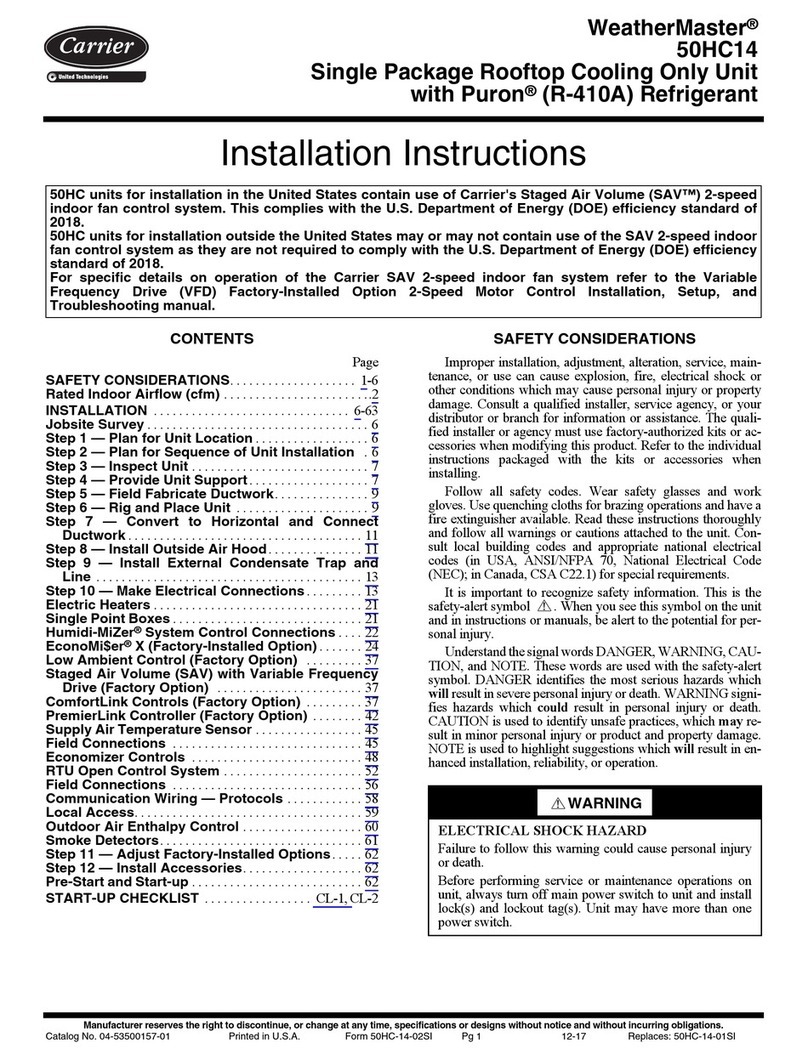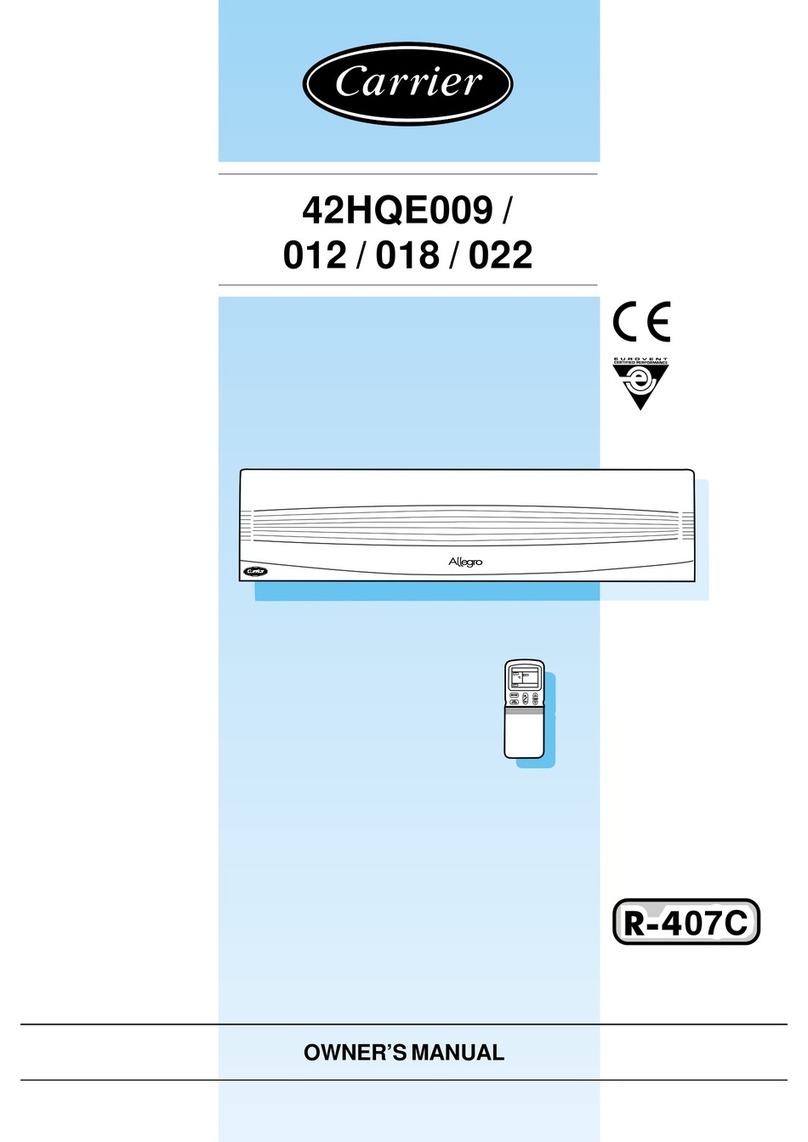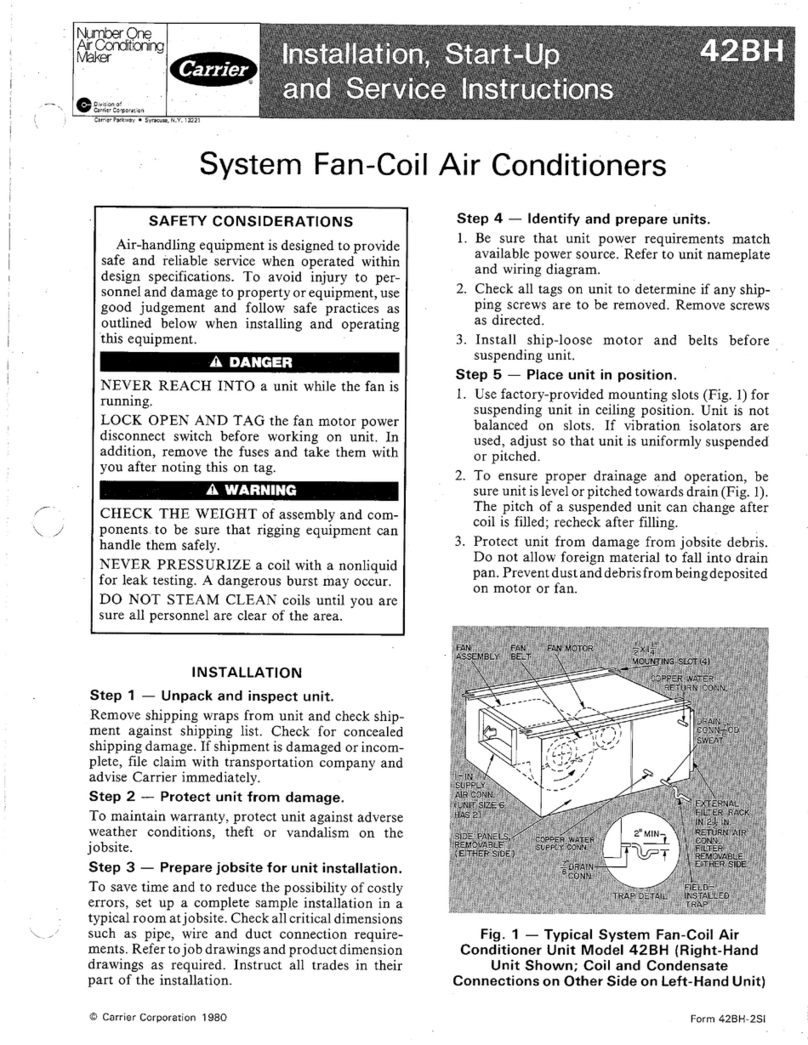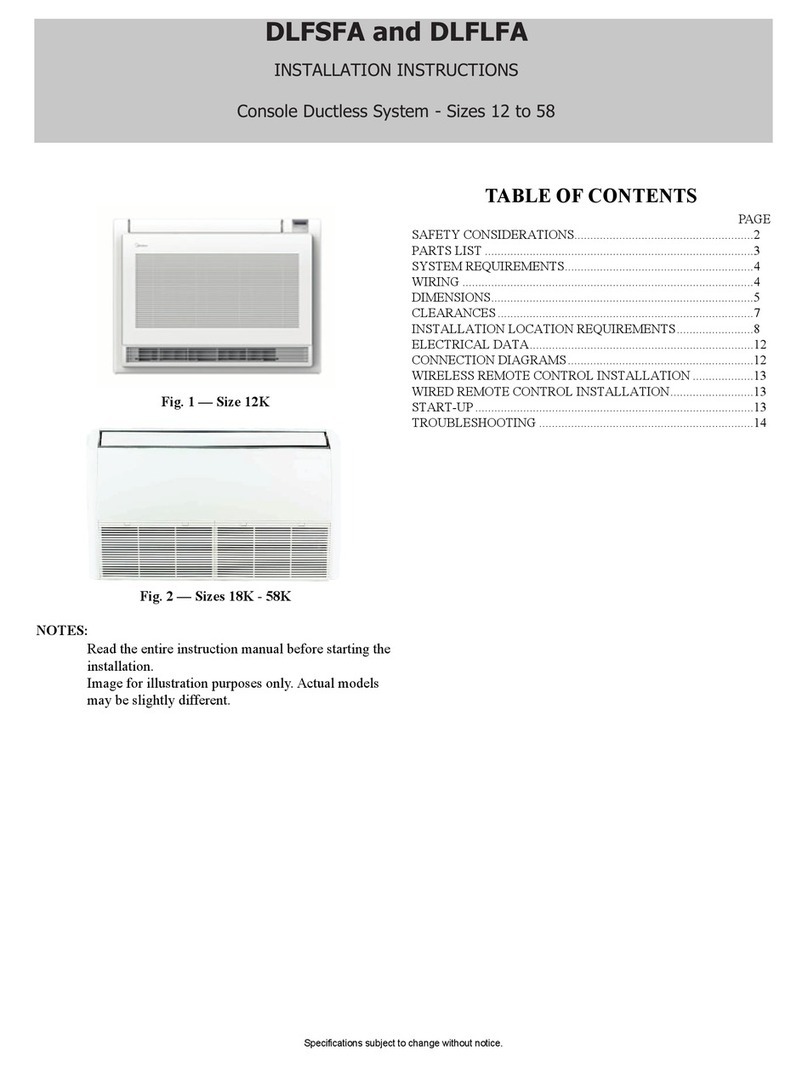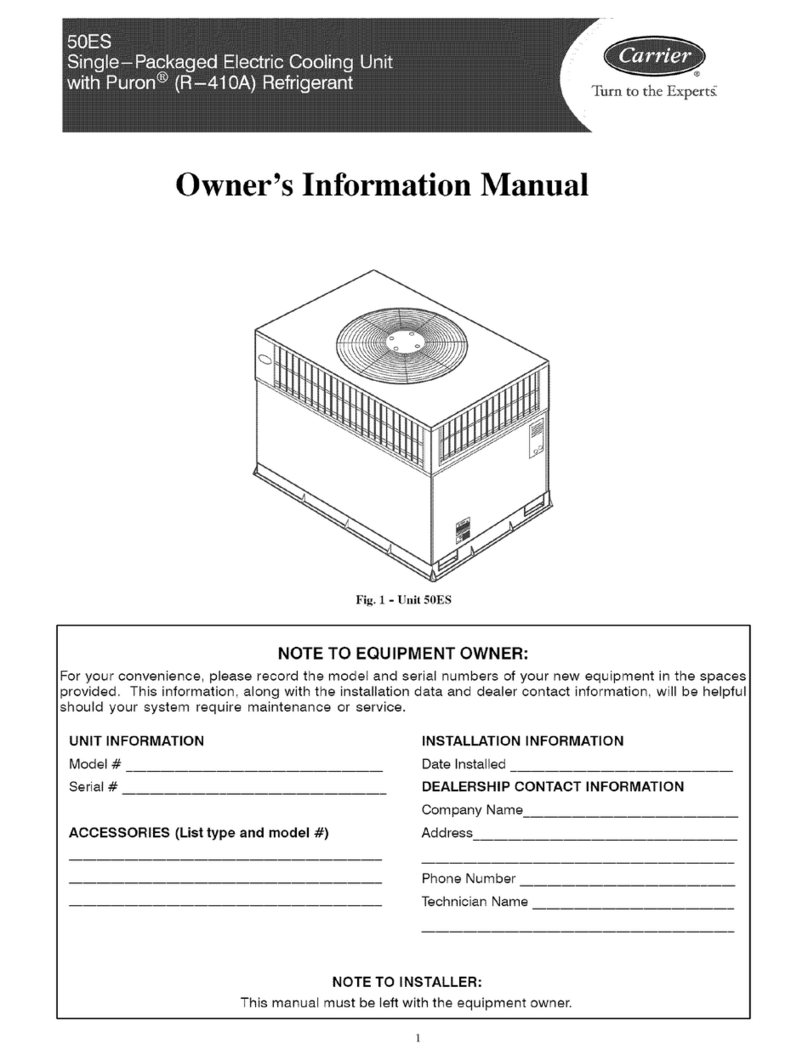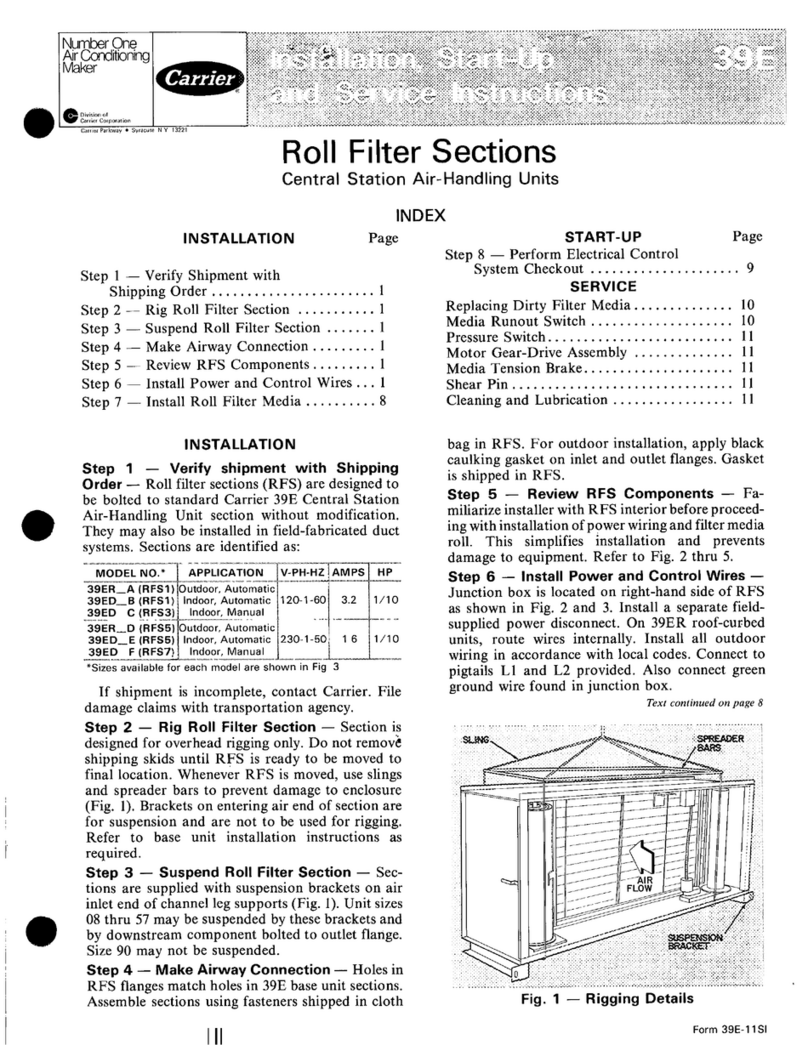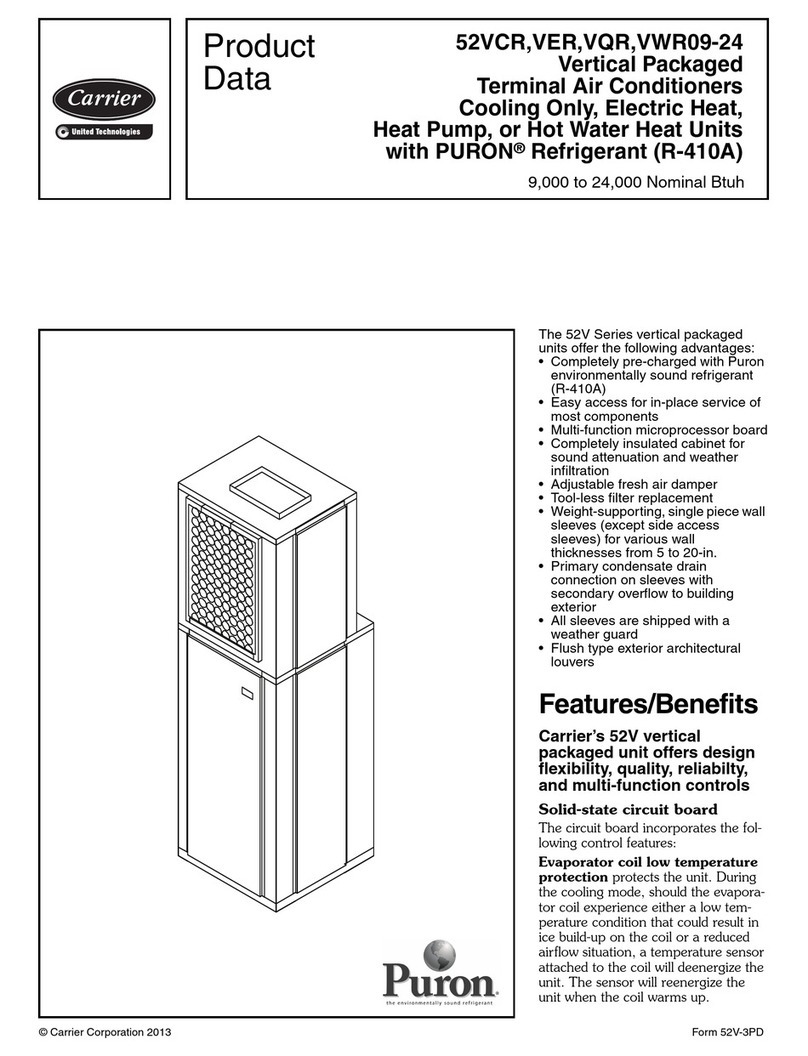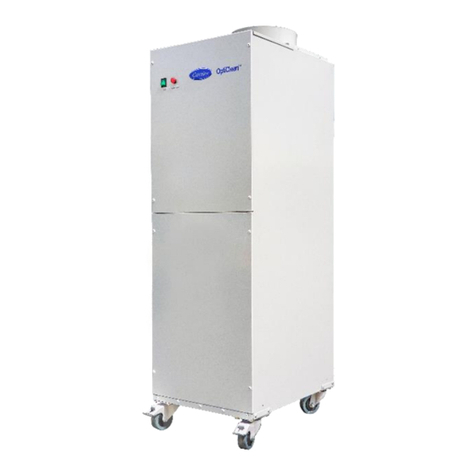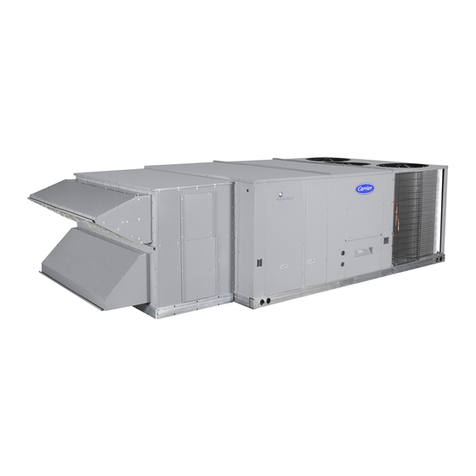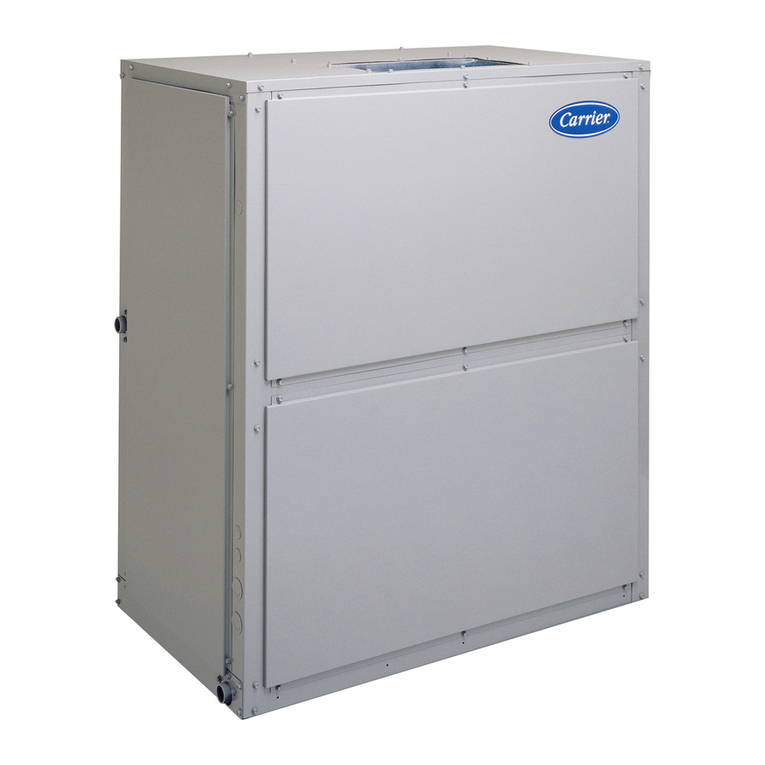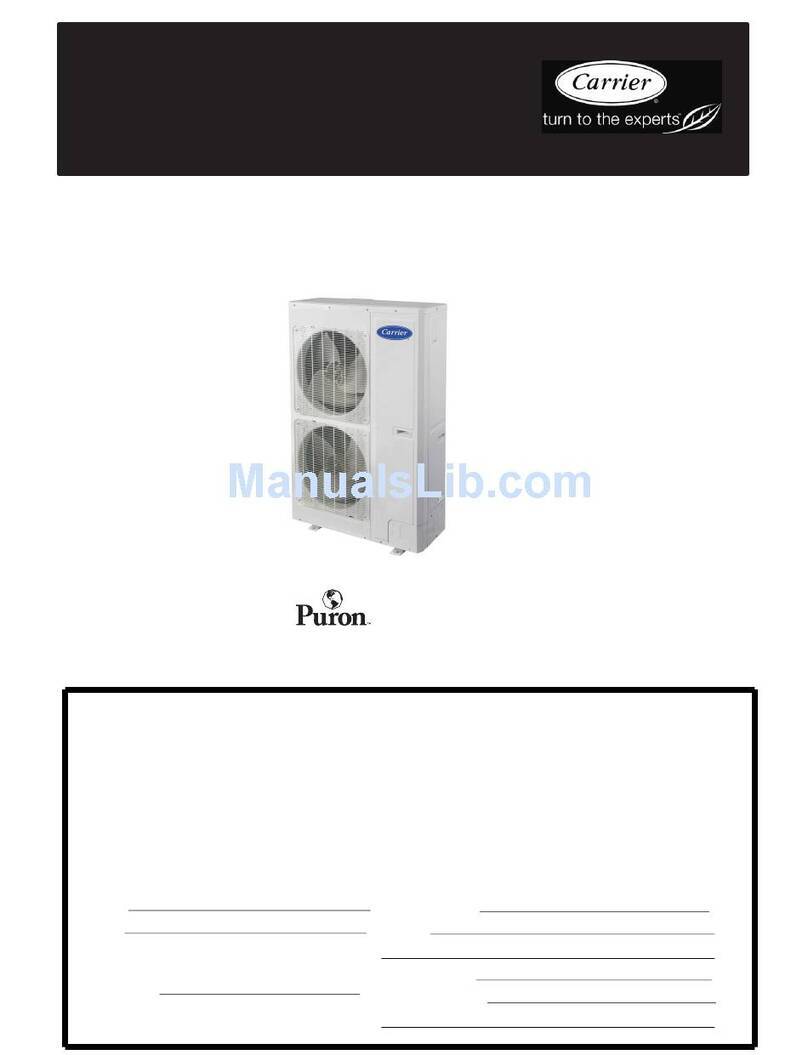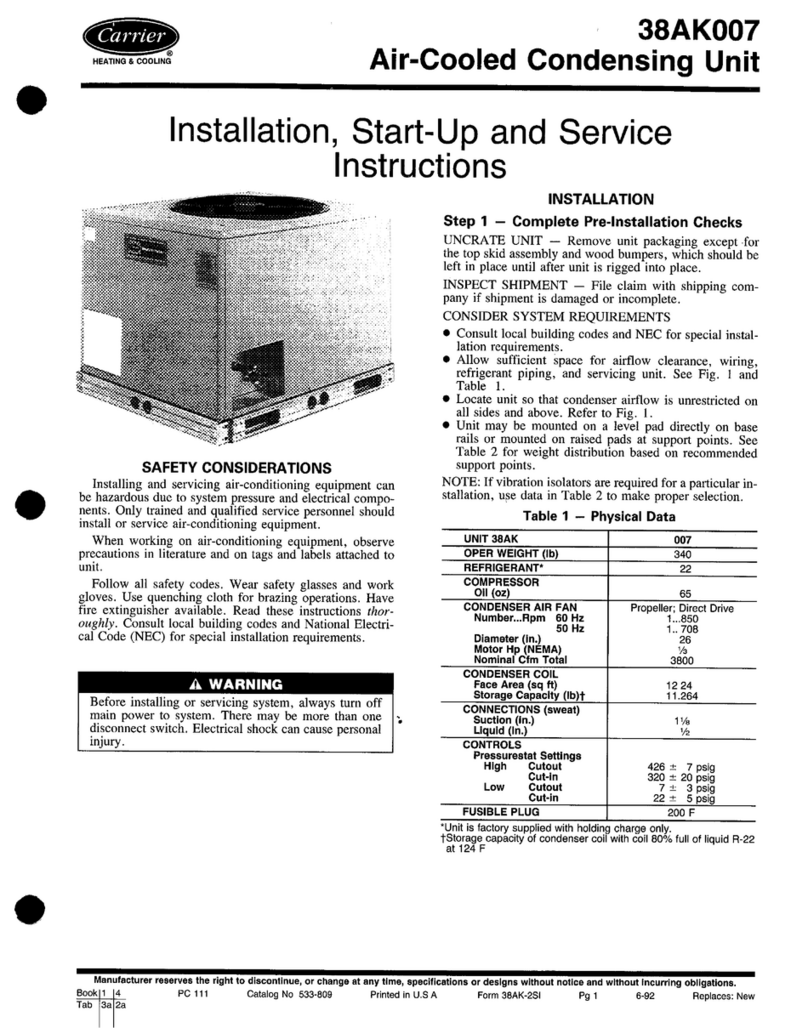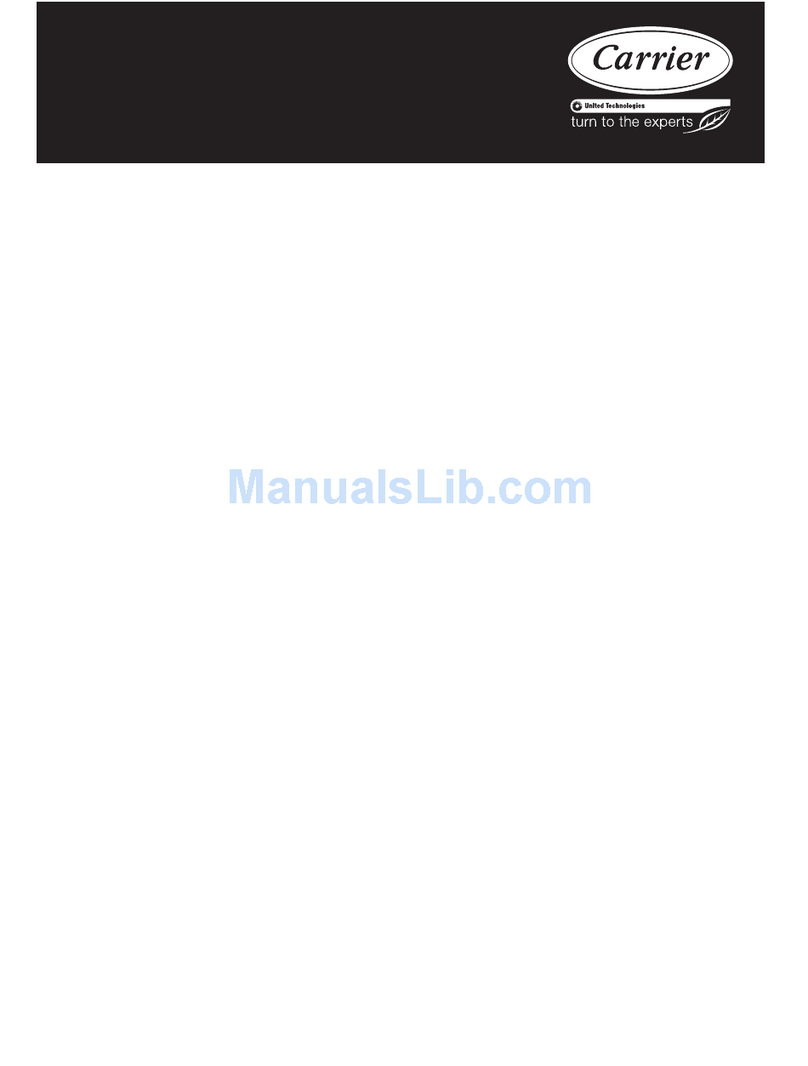GB -
38GLS…G / 38YL-…G Puron
appropriate disposal center or to the original equipment dealer.
• Carefully recover refrigerant within this unit before final disposal or
when servicing. Never vent refrigerant to atmosphere.
Use approved recovery equipment for R- 10A refrigerant.
Do not use R-22 equipment.
Choosing the installation site
Positions to avoid:
• Exposed to direct sun.
• Too close to sources of heat radiation, vapour or flammable gas.
• Particularly dusty areas.
Recommendations:
• Choose a position protected from opposing winds.
• Choose a position sheltered from direct sun.
• Choose an area where air outlet and unit noise will not bother
your neighbours.
• Choose a position that allows for the clearances required.
• Floor structure should be adequately strong to support unit weight
and minimize vibration transmission.
• Consider a position which will not obstruct passageways or doors.
• Fix the unit with locally purchased bolts buried in the block to
prevent overturning due to strong gusts of wind.
• For heat pump models, unit must be adequately raised above
floor surface.
• To drain the condensate water to a drain while operating in
heating mode, insert the drain fitting into the hole underneath on
the left of the base and use a vinyl pipe with a 16 mm internal
diameter. It must not be used at temperatures lower than 0°C.
(not supplied for low temperature versions).
• If the unit is installed in areas where heavy snowfalls may occur, it
is necessary to raise its level at least 200 mm above the usual
snow level or alternatively to use the outdoor unit bracket kit.
General information
Unit installation
R-410A systems operate at higher pressures than standard
R-22 systems. Do not use R-22 service equipment or
components on R-410A equipment.
Read this instruction manual thoroughly before starting the
installation.
• This unit complies with low-voltage (EEC/73/23) and electro-
magnetic compatibility (EEC/89/336) directives.
• For trouble-free installation, it should be carried out by a qualified
installer.
• Follow all current national safety code requirements. In particular
ensure that a properly sized and connected ground wire is in place.
• Check that voltage and frequency of the mains power supply are
those required; the available power must be adequate to operate
any other possible appliances connected to the same line.
Also ensure that national safety code requirements have been
followed for the mains supply circuit.
• The mains supply must be connected to the outdoor unit.
• Connect indoor and outdoor units with field-supplied copper
pipes by means of flare connections. Use insulated seamless
refrigeration grade pipe only, (Cu DHP type according to
ISO1337), degreased and deoxidized, suitable for operating
pressures of at least 200 kPa and for burst pressure of at
least 20700 kPa. Under no circumstances must sanitary type
copper pipe be used.
• After installation thoroughly test the system operation and explain
all system functions to the owner.
• Leave this manual with the owner for consultation during future
periodic maintenance.
• Use this unit only for factory approved applications: the unit is
suitable for outdoor installation.
• This installation manual describes the installation procedures of
the outdoor unit of a residential split system consisting of two units
manufactured by Carrier. Consult factory or a qualified system
engineer prior to connecting this unit to any other manufacturer's
indoor unit. Coupling units which have different control systems,
may cause irreversible damage and void the warranty protection.
The manufacturer declines any liability for system malfunction
resulting from unapproved coupling.
IMPORTANT:
During the unit installation make first refrigerant connections
and then electrical connections. If unit is uninstalled first
disconnect electrical cables, then refrigerant connections.
WARNING:
Disconnect the mains power supply switch before servicing
the system or handling any internal parts of the unit.
• The manufacturer declines any liability for damage resulting from
modifications or errors in the electrical or refrigerant connections.
• Failure to observe the installation instructions or use of the unit
under conditions other than those indicated in Table III “Operating
limits”, will immediately void the unit warranty.
• Failure to observe electric safety codes may cause a fire hazard in
case of short circuits.
• Inspect equipment for damage due to improper transportation or
handling: file an immediate claim with the shipping company.
Do not install or use damaged units.
• In case of any malfunctioning turn the unit off, disconnect the
mains power supply and contact a qualified service engineer.
• This equipment contains R- 10A refrigerant, a substance that is
not depleting the ozone layer.
• All of the manufacturing and packaging materials used for
your new appliance are compatible with the environment and
can be recycled.
• Dispose of the packaging material in accordance with local
requirements.
• This equipment contains refrigerant that must be disposed of in a
proper manner. When disposing of the unit after its operational
life, remove it carefully. The unit must then be delivered to an
A
mm
B
mm
No. Ø 8 mm pins.
Protrusion height from the
support surface max. 20 mm.
Model AB
07-09-12 390 250
18-2 508 330
Snow
햵Drain fitting
햶Vinyl pipe
햶
햵
햲100 mm min.
햳20 mm gradient.
햴Gravel-filled trench.
